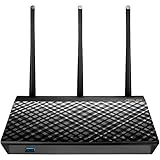Internet is without any doubt the most revolutionary technology that has touched our lives.
The impact of internet with its benefits and contributions are very rightly compared to the invention of paper and printing press.
And more impactful than its invention is the multiple facets of applications that the internet has opened up.
Think about it.
How quickly can you access today’s new now?, how quickly can you learn about anything that pops up in your mind.
This very post was bought to you by the magic of internet.
So I don’t want to be too redundant telling you how incredible internet is.
But its necessary to lay the foundation for you to understand the various terminologies associated with it.
I mean accessing internet is so easy today.
You just have to open your phone and there it is.
But do you ever wonder what mechanics are involved behind bringing those data packets to your home.
What is a router, what is a modem, what is the function of both of them?.
How is a router different from a modem?, do you need both router and modem to be able to access the internet?
If you don’t, no need to worry all these queries and more will get resolved once you read through this beginner friendly article.
So stick till the end.
You will not need to read through any other post on the internet 😊.
So, let me first without wasting your time resolve the query of all those people who actually know a little bit about this stuff and quickly want an answer to the question,
Feel free to jump through different section of the post using the table of content below if you need.
Do You Need Both Router And Modem?
Well, if you have very limited number of devices in your home, chances are your Internet Service Provider will provide you with a standalone unit that works as both modem and router.
However, if you have multiple devices in your home that need access to the internet it is advisable that you get a standalone router and a standalone modem.
In addition to this, although having a 2 in 1 modem/router is convenient tasks such as placement flexibility, VPN access, advanced routing, hardware sharing, increased security will require you to a separate router.
The list of best modems and routers you can get right now is neatly laid out below.
Getting A Separate Router And Modem Is Probably Your Best Bet From A Strict Technical Standpoint.
So, while a standalone modem-cum-router unit will work and will be convenient, try and see if you can get a separate modem and router for these technical reasons.
For people who don’t want to get into the technical stuff, you can skip over to the next section here.
But really urge you to go through this section too to get a stronghold on why you should probably go with separate router and modem.
I will try and make it as easy as I can.
1. Upgrading to a new DOCSIS/DSL Or A New Wi-fi standard may become a hassle.
I am not going to go into too much details of what DOCSIS protocols are.
You can read about DOCSIS protocols in-depth here.
But if I have to describe the impact of this upgrade in technology to end users like you and me its just this.
For example, say you are using a DOCSIS 2.x cable modem, you will have a limitation of being able to use just one download and one upload channel.
When data traffic congestion is at its peak your internet may become very slow, whereas if you were using a DOCSIS 3.x channel collaborative modem you would have been taking advantage of multiple channels in order to have insane speeds during heavy usage.
DOCSIS 3.x was the biggest iteration in communication protocol that happened in 2008.
It brought with it two significant changes: Speed and Channel Bonding.
I will create a whole post about this if you want but I don’t want to overburden you with stuff you don’t necessarily need.
But I hope I was able to lay through how an upgrade in protocol can render your integrated modem to limit you heavily.
2. Ability To Use NAT/DHCP and Increased Security
With a standalone router you will be able to access and manage Network Address Translation(NAT) and Dynamic Host Configuration Protocol settings among the devices connected via your router.
This is important so that a standalone modem-cum-router doesn’t necessarily create extra address space.
A router crafted with attention to details in terms of communication protocols and ease of access also provide enhanced security to your network of devices.
Which brings us to the next point.
3. Mass Produced Standalone Units My Be Prone To CableTap Vulnerabilities.
Standalone units that are manufactured in bulk can sometime open your network up to security vulnerabilities.
To cite an example, the CVE-20179475 in Comcast routers with XFINITY WiFi hotspots create security vulnerabilities that allow attackers to impersonate a connected subscriber and frame the subscriber for all the activities they did on the network.
So, for reasons cited above but not limited to the list, it is probably in your best interest if you can get a separate router and a separate modem for yourselves.
The recommended routers that check all these boxes are listed below.
Now that you know that it is probably in your best interest to actually try if you can get a standalone router and a standalone modem for your network deployment.
But what does a router really do in a network?
For that matter what does a modem do functionally in a network?
What is a router’s core functionality?
I feel I need to touch into these basics so that the knowledge you get from here is complete and without any gaps.
What Does A Router Do?
The core function of a router is to interconnect different devices on a network primarily and route internet packets through each of them if need be.
Understand this router isn’t just used to provide internet to all your devices.
Different devices connected to each other via a router can be configured to share files and printers in the network thus created.
But in context to the discussion we have been having on this post, routers connect a modem (receiving internet from your ISP) to different devices in your home (or network) to communicate with each other and share internet.
Here are some other functionalities of a router at a glance,
- A router manages and assigns IP addresses to different devices on the local network.
- Your router is the public figure that transmits requests (a web page for example) on behalf of your local devices.
- A router is also the protector or security guard of your network. Your router gets assigned the public IP. This means anyone trying to access this very IP will find this router.
Imagine if this router isn’t effective in kicking threats out. Your whole network of devices can be exposed. This is how networks get hacked basically.
So if you are working in an office space or any network that shares sensitive data, get a good router. - Provides the functionality to connect a large number of local devices (wired and wireless to the network) given most standalone devices or modems offer just one ethernet port.
What Does A Modem Do?
Modem is a word coined by the combination of modulator and demodulator.
And it does what its name implies.
A modem in a network is a bridge between your ISP and your router (or network devices) that translates the signals coming from your ISP into a format that can be understood by different devices on your local network.
Similarly, the modem can also listen for data produced by your local devices and convert into a format understandable by your ISP.
This whole process needs to happen if because all your local devices are digital devices to be precise.
I am sure you must have learned this in your high school that your computer understand the language of zeroes and ones.
Your modem is the converter that converts the analog (continuous) signal from your phone line into a discreet signal that can be encoded into zeroes and ones which your computer will understand.
So, in simple terms, a modem converts the incoming data into computer friendly form.
I should have led with that. :p
Ah, well.
What Is The Difference Between A Modem And A Router?
Understand the difference between a modem and a router with a traffic analogy.
A modem is the first barricade or check post that will allow the traffic (internet data packets) to enter from the main highway (ISP).
A router on the other hand is the local traffic policeman that will dictate in how many directions and destinations can the incoming traffic be directed into.
The directions here are the network routes (wired or wireless) and the destinations here are the devices that need internet.
So, you it’s really simple to understand what is the difference between the two.
No need to make it too complicated.
A modem converts the signals from your ISP into a format that can be understood by your computer and other digital devices.
A router actually directs this translated or converted signal to different network devices (computers, smartphones, smart gadgets etc.) so that each of them can have access to the internet.
Best Wireless Routers For Home Network In 2020
Quick Glance










1.Google Nest Wi-fi
Best routers for smart homes
- This Certified Refurbished product is manufacturer refurbished, shows limited or no wear, and includes all original accessories plus a 90-day limited hardware warranty.
2.Asus RT-AC86U
High performance router from Asus.
- Connector Type : USB.Antenna: External detachable antenna x 3. Internal antenna x 1..Memory : 256 MB Flash, 512 MB RAM
- Dual-band (2.4 plus 5 GHz) AC2900 wireless router with the latest 802. 11AC MU-MIMO technology for data transfer speeds up to 2900 Mbps
- 1.8GHz 32bit dual-core processor optimizes network traffic and connectivity speeds from the USB 3. 1 Gen1 and 4x Gigabit LAN ports
- Designed for lag-free online gaming and flawless 4K UHD streaming with WTFast game Accelerator and adaptive QoS; Product Segment: AC2900 ultimate AC performance: 750 plus 2167 Mbps
- A protection powered by Trend Micro provides built-in 24/7 protection from external attacks and threats, neutralizing them before they reach your network or connected devices. DC Output : 19 V with max. 1.75 A current
3.Netgear Nighthawk Pro
Best high performance router for gaming
- Minimize ping and maximize performance with four 1 Gigabit Ethernet ports for lag free, wired connectivity and 1.7 GHz dual core processor network efficiency.Beamforming : Implicit & Explicit Beamforming. LEDs : On/off LED lights option.
- Amp up your Wi-Fi with AC2600 dual band router that delivers blazing fast speeds up to 2.6 Gbps
- Put your gaming traffic in a designated express lane with advanced quality of service, bypassing network congestion and reducing lag spikes, jumps and jitters
- Make every millisecond count by using Geo filtering to connect to the closest servers and players so you can respond and dominate
- Monitor your network and game ping in real time so you can see who’s hogging the bandwidth by device and application
4. TP-Link Deco M9 Plus
- If you're looking to ditch your traditional router extender setup for a whole Home Wi-Fi system, put the TP-Link Deco M5 Wi-Fi system on your short list PC mag said
- Better coverage than traditional Wi-Fi routers: Deco M5 uses 3 units working seamlessly to create a mesh network that can cover homes up to 5,500 square feet. No dead zone anymore
- Seamless and Stable Wi-Fi: Rather than Wi-Fi range extender that need multiple network names and passwords, Deco M5 allows you to enjoy seamless roaming throughout the house, with a single network name and password
- TP-Link unique Adaptive routing technology automatically chooses the fastest path for every device and allows for more flexible placement than a satellite system
- Secure Wi-Fi Mesh Network: Protect your network and connected devices with a free lifetime subscription to TP-Link HomeCare featuring Next-level Antivirus, Robust Parental Controls, and QoS
5.Asus RT-AC66U Dual-Band Wi-fi Router
- 1GHz CPU powers dual-band 3x3 802.11ac Wi-Fi technology for speeds up to 1750Mbps and wide, responsive coverage for large homes. Coverage area - 3,000 square feet.Antenna : External antenna x 3. Transmit/Receive : MIMO technology , 2.4GHz 3x3, 5GHz 3x3.
- Monitor and manage your network with ease from your mobile device using the intuitive ASUS Router App; Firewall:SPI intrusion detection,DoS protection
- Effortless router setup with ASUSWRT web-based interface. OS Support - Linux,Windows 8,Windows 10,Windows 7 ,Mac OS X or higher,Windows 8.1,Windows XP
- Integrated USB 3.0 and 2.0 ports enable printer sharing throughout your network and remote file access with AiCloud 2.0 support
- AiProtection Powered by Trend Micro provides multi-stage protection from vulnerability detection to protecting sensitive data
Best Cable Modems To Couple Routers In 2020
Quick glance










1.Netgear CM600
Overall best cable modem
- Compatible with Comcast Xfinity, Time Warner Cable, Charter, Cox, Cablevision, and more. Requires Cable Internet Service
- Not compatible with: Verizon, AT&T, or CenturyLink
- Cable Modem only (no WiFi router).Memory: 8 MB NOR flash and 128 MB RAM
- Support Cable Internet Service plans up to 300Mbps. Recommended for all speed tiers up to 500 Mbps. Separate router required for WiFi. 24x8 channel bonding
- DOCSIS 3.0 Cable Modem with 1 Gigabit Ethernet port. DOCSIS 3.0 unleashes 8x faster download speeds than DOCSIS 2.0
2. Netgear CM500
Next best thing after CM600
- Save monthly rental fees: Model CM500 replaces your cable modem, saving you up to $168/yr in equipment rental fees.
- Speeds by carrier: Spectrum (up to 400Mbps), Xfinity (up to 200Mbps), Cox (up to 150Mbps).
- Works with any wifi router: Connect any WiFi router to this modem's Ethernet port to support all your wireless devices.
- Ethernet connections: 1 Gigabit Ethernet port connects to your computer or separate WiFi router.
- Modem technology: Engineered with 16x4 channel bonding and DOCSIS 3.0.
3.Arris Surfboard SB6183
Perfect modem for home use
- Tom's guide #1 cable Modem choice 2 years in a row. Compatible with major U.S. Cable Internet Providers including Cox, Spectrum, Xfinity & others. Not compatible with ATT, Verizon, CenturyLink or other DSL or Fiber internet providers.
- DOCSIS 3.0 Cable Modem best for cable internet speed plans up to 400 Mbps
- 16 downstream x 4 upstream DOCSIS 3.0 bonded channels
- 1 Gigabit Ethernet port for connecting to a Wi-Fi router or other device.
- Cable internet service required. Does NOT include Wi-Fi or support cable telephone feature..
4.Arris Surfboard SB6190
Best modem for compact spaces
- Power your home network with the SB6190 to deliver fast speeds and a reliable connection to the Internet. The SURFboard SB6190 is a DOCSIS 3.0 modem that's capable of download speeds up to 1.4 Gbps.
- Get internet speeds up to 1.4 Gbps for downloads and 262 Mbps for uploads based on your cable ISP subscription.
- Gigabit Ethernet port connects to your computer or router for fast downloads.
- Stream HD video and games on multiple devices at the same time.
- Download 32 channels and upload 8 channels to future proof your modem as your Cable ISP enhances service offerings.
5. Linksys CM3008
Simple functional budget modem that gets the job done without complaints
- Compatible with Comcast Xfinity, Time Warner Cable, Charter, Cox, Cablevision, and more; Requires Cable Internet Service
- Not compatible with: Verizon, AT&T, or CenturyLink
- Cable Modem only (no WiFi router)
- Features Intel Puma 5 chipset to achieve high speed downstream and upstream performance
- 8 download and 4 upload bonded DOCSIS channels give you the most out of your existing cable broadband connection
FAQs
Okay, so I suppose we have covered everything we can associated with the topic.
Let me just go ahead and cover some more questions that many people ask when it comes to routers and modems.
If you have any more questions apart from these I request you to write them out in the comments section.
If the queries see to resonate with a majority of people I will keep clarifying them and accommodating them in this FAQ section here for all to see.
Do I need a modem if i have an ethernet port?
To this my counter question will be are you able to access internet with it when you connect it to your PC.
If the answer is yes then of course not.
You don’t need get a modem or a router for that matter if the ethernet cable provided by your college, university, hotel etc is letting you access the internet.
Your modem is the entry point to which cable from your ISP.
Modem then translates the signal received from your ISP into computer understandable form which then gets re-routed to different devices in your local network via router.
The fact that you have an ethernet cable that is giving you access to internet means that somewhere this cable is connected to a router which in turn is connected to a working modem.
You may need to contact your network administrator for password to access the internet though if you already can’t.
Do you need a good modem for a good router?
It is always good to couple a high-quality router with a matching modem so that you don’t face any compatibility, security and speed issues.
As explained already, if you are using a standalone modem-cum-router unit a shift in technology such as the DOCSIS protocol can render your integrated modem useless or heavily limited to say the least with respect to the latest standards.
A good router combined with a good modem allows you to have capacities such as advanced routing, hardware sharing, increased security, flexible placements, better control and similar such advanced features.
So, while having just a two in one router-cum-modem unit will work having a good quality modem working in tandem with a similar quality router is the way to go.
Okay so with that we are at the end of this in-depth discussion on routers, modems, the difference between them, how are they deployed and what are their individual functions in a network.
We also looked at the best modems and routers you can get for your home or office use.
Frequently asked questions were also covered here.
If still you have any doubts regarding anything that we covered here feel free to lay them out in the comments section and I will incorporate your query in the FAQ section.
Take care of yourselves and I will see you in the next one.
Tada!




